Mastiffs are totally awesome dog breeds.
Personally, I own a 100-pound female Rottweiler which is technically a Mastiff-type dog and she’s wonderful, I love everything about her inside and out.
Many people fancy the Mastiff appearance – huge bear paws, large heads with sweet faces and majestic jowls come to mind.
However, there’s a downside to all these features.
All dogs need training but big dogs even more so to avoid you being dragged by a 150+ pounds machine of a dog.
Big jowls mean extraordinary amounts of slobber.
Big dogs in general are more expensive to feed and provide for.
Not everybody is seeking their next companion among the Mastiff breeds though.
You might just be curious about what types of Mastiffs are out there.
I’ll dive a bit into each breed’s temperament and exercise needs as well as the summarized history.
Interested in a quick overview of where they’re from and what kennel club recognizes them? I’ve got you covered below.
Everybody likes the big boys and gals but how big are they really? I’ve compiled the weight and height of all 22 Mastiff breeds.
So let’s dive in.
How Many Mastiff Breeds Are There?
According to the list below with most breeds being recognized by the FCI and/or AKC, there are 22 Mastiff breeds in total.
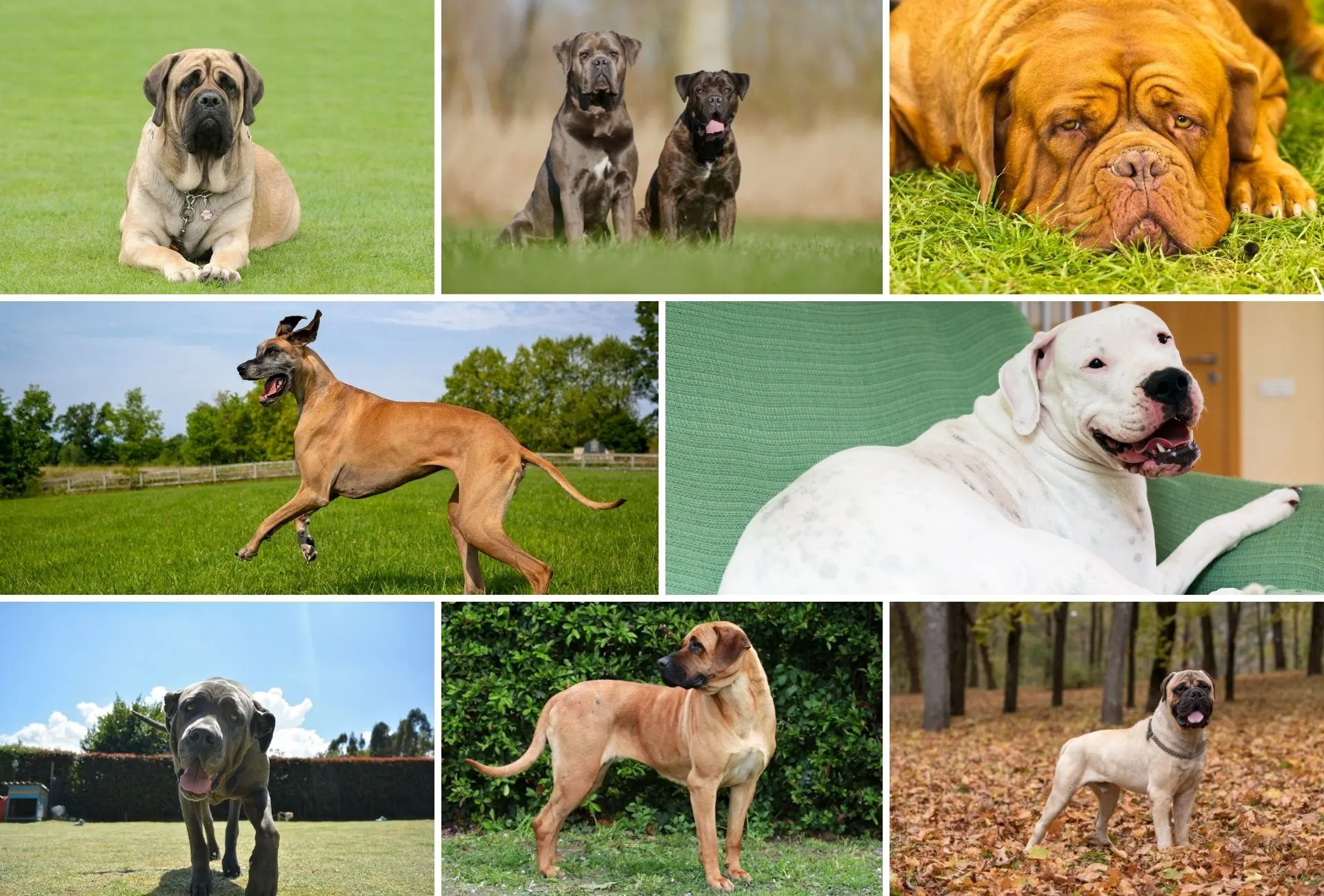
This list of Mastiffs is made up of FCI-recognized “Mastiff type” dogs as well as (strictly speaking) Molosser mountain-type dogs with Mastiff in their name and other unrecognized but existing Mastiffs.
What do I mean by that?
Well, the FCI categorizes dog breeds, and one of the categories is called “Group 2 Pinscher and Schnauzer – Molossoid and Swiss Mountain and Cattledogs”.
As the name suggests, Group 2 is divided into three sections:
- Pinscher and Schnauzer type
- Molossian type Section (which we are focusing on)
- Swiss Mountain- and Cattledogs
This “Molossian type” section has sub-categories which include “Mastiff” and “Mountain” types.
Upon browsing their website, you’ll see that I left out some Mastiff-type dogs because they’re really just that – types.
You wouldn’t consider a Boxer a stereotypical Mastiff and are probably not searching for one.
Fun fact: Other Mastiff types include the Shar-Pei, Boxer, Rottweiler, Bulldog, and Cimarrón Uruguayo – all left out for the purpose of this article.
Conversely, I’ve decided to include some Mountain type dogs because they’re literally named Mastiff.
Here’s the list of all 22 Mastiff breeds, their origin, and what kennel club recognizes them.
| Breed | Origin | Club recognition |
|---|---|---|
| Dogo Argentino | Argentina | FCI / AKC |
| Fila Brasileiro | Brazil | FCI |
| Broholmer | Denmark | FCI / (AKC) |
| Dogue de Bordeaux | France | FCI / AKC |
| Great Dane | Germany | FCI / AKC |
| Bullmastiff | Great Britain | FCI / AKC |
| English Mastiff | Great Britain | FCI / AKC |
| Cane Corso | Italy | FCI / AKC |
| Neapolitan Mastiff | Italy | FCI / AKC |
| Tosa Inu | Japan | FCI / (AKC) |
| Cão Fila De São Miguel | Portugal | FCI |
| Perro Dogo Mallorquín | Spain | FCI |
| Presa Canario | Spain | FCI |
| Spanish Mastiff | Spain | FCI / (AKC) |
| Pyrenean Mastiff | Spain | FCI / (AKC) |
| Tibetan Mastiff | Tibet | FCI / AKC |
| Boerboel | South Africa | AKC |
| Bully Kutta | Pakistan/India | None |
| Abruzzese Mastiff | Italy | None |
| Dosa Gae | South Korea | None |
| Aksaray Malaklisi | Turkey | None |
| American Mastiff | USA | None |
You probably noticed that some dogs are recognized by both the AKC & FCI while others are only recognized by either one of them (mostly FCI) or not recognized at all by either one.
(AKC) means that the AKC is aware of the breed’s existence and has profiles on them but does not formally recognize them or list them on their popularity lists.
Why are some breeds not recognized? Well, while they’re not extinct, they’re quite rare and don’t have a breed standard.
Dogo Argentino
To this day, the Dogo Argentino is often used as a big-game hunter.
What’s a tad special about the Dogo Argentino is that they’re fierce strategic hunters in a pack while being able to relax around their family. Ideally, that is.
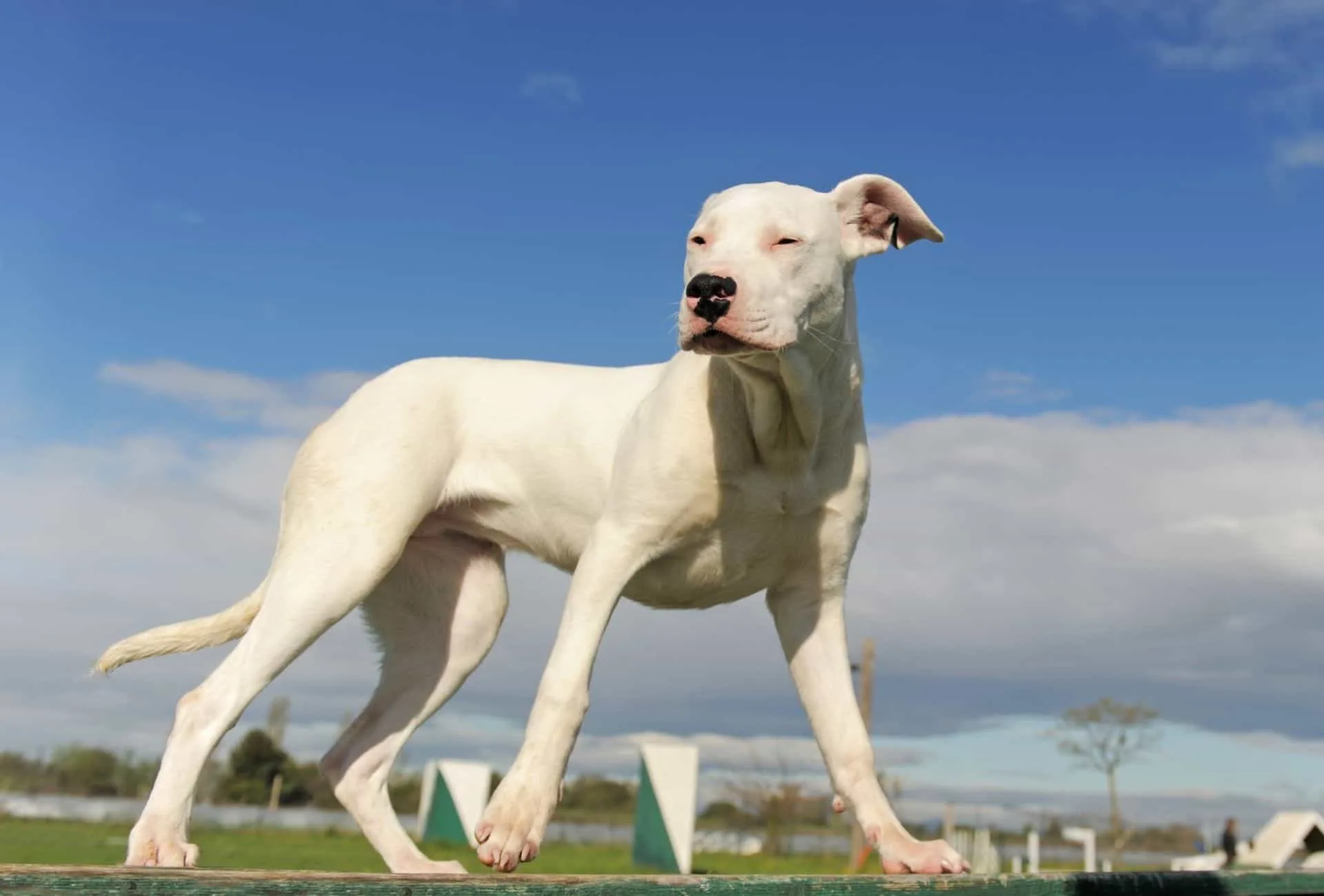
At 60-68cm (24-27in) they’re big dogs but with 35-45kg (75-100lbs) on the lighter side of Mastiffs.
They’re not the biggest droolers and have a short and smooth coat.
While the Dogo is generally good around family, and often even other dogs as well as children, they need a strict training regimen from day one to create a perfect canine companion.
Fila Brasileiro
Like many others on this list, the Fila Brasileiro is a multi-purpose dog. Guarding, herding, hunting big game – you name it.
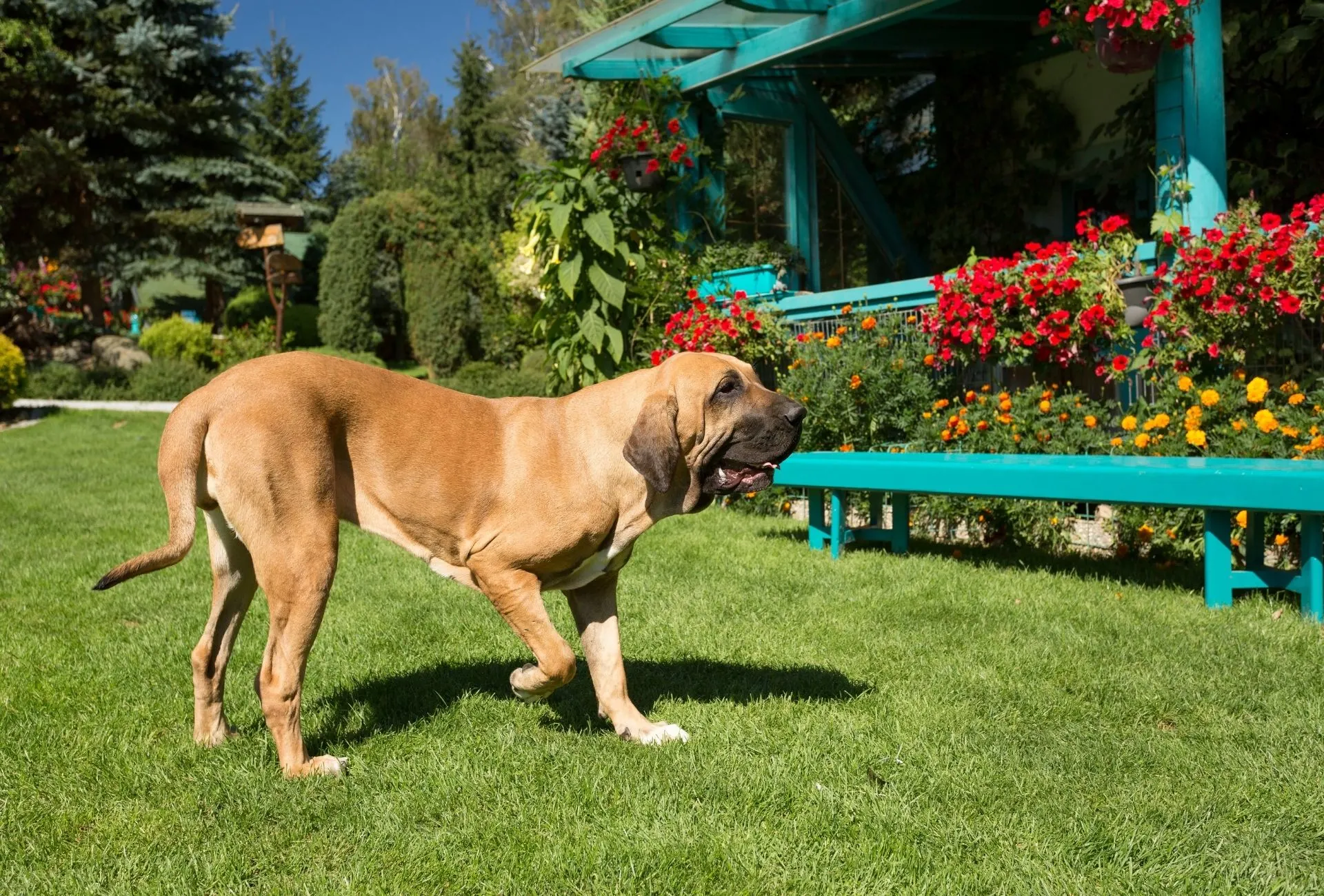
The Fila is very self-assured and yet aloof with strangers.
They usually come in brindle or fawn and black with white markings limited to the chest, feet, and tip of the tail.
Broholmer
Depending on where you live the Broholmer isn’t commonly seen despite them being around since the Middle Ages as a (stag) hunting dog.
While their popularity and status as purebred surged in the late 18th century, they became almost extinct when the Second World War ended.
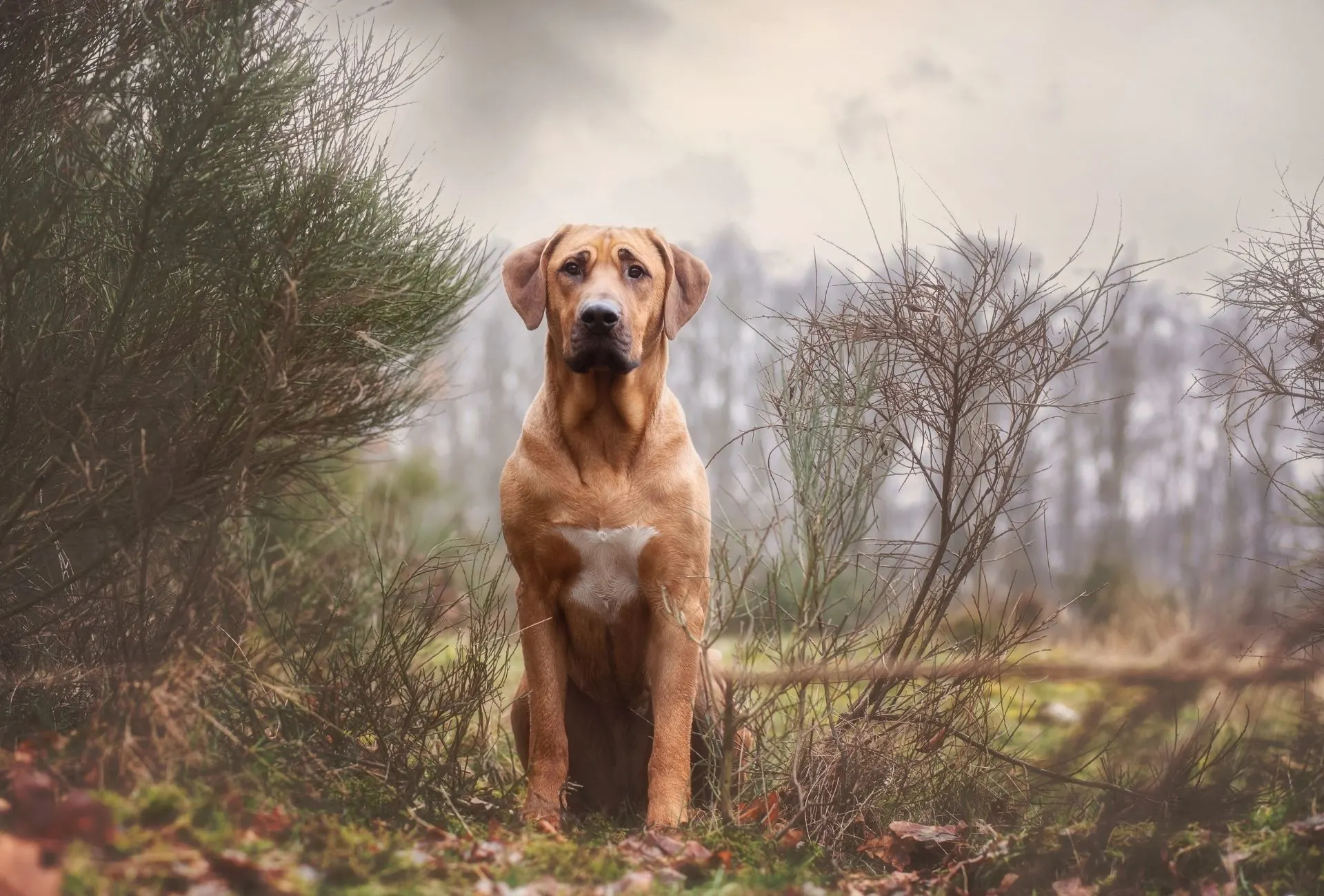
In the mid-1970s a group of committed breed enthusiasts attempted to revive the breed.
The Broholmer’s large head, statue, and color are reminiscent of the Boerboel or Bullmastiff.
These big Danish boys and girls definitely don’t have to hide behind their more common counterparts from South Africa and Great Britain.
Dogue de Bordeaux
This contender has a smooth, short, and easy-to-groom coat.
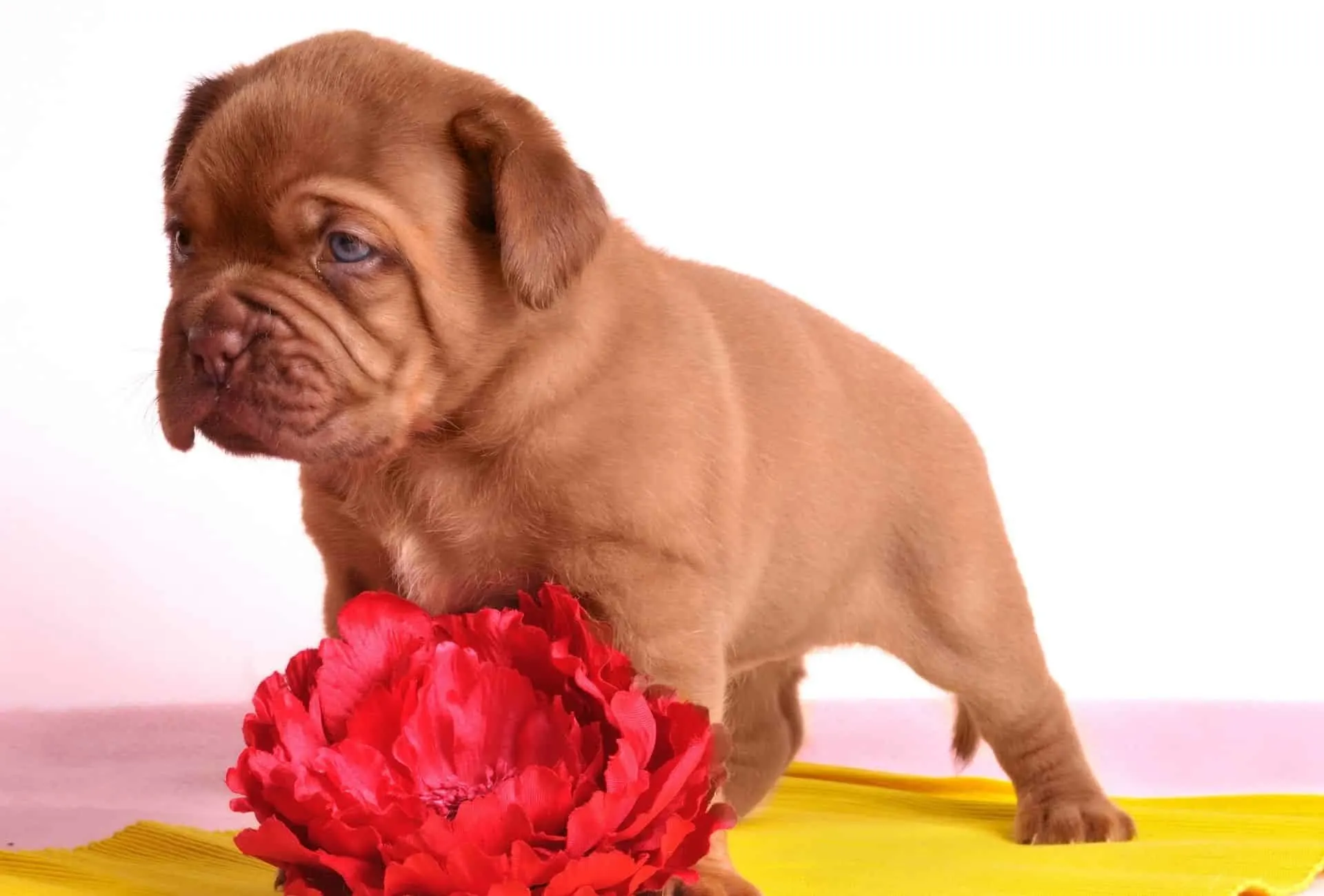
While the Dogue de Bordeaux leans a lot toward needing a lot of mental stimulation and being eager to please according to the AKC, I’ve seen pretty stubborn individuals.
Your Dogue de Bordeaux definitely needs a good amount of training and exercise though, especially to avoid any hip/elbow issues which this breed is extremely prone to.
Great Dane
You may have heard about the Great Dane as the tallest dog in the world.
And yes, these giants can reach anywhere from 71-86cm (28-34in), sans the bulky appearance (more of a lanky and sometimes clownish appearance).
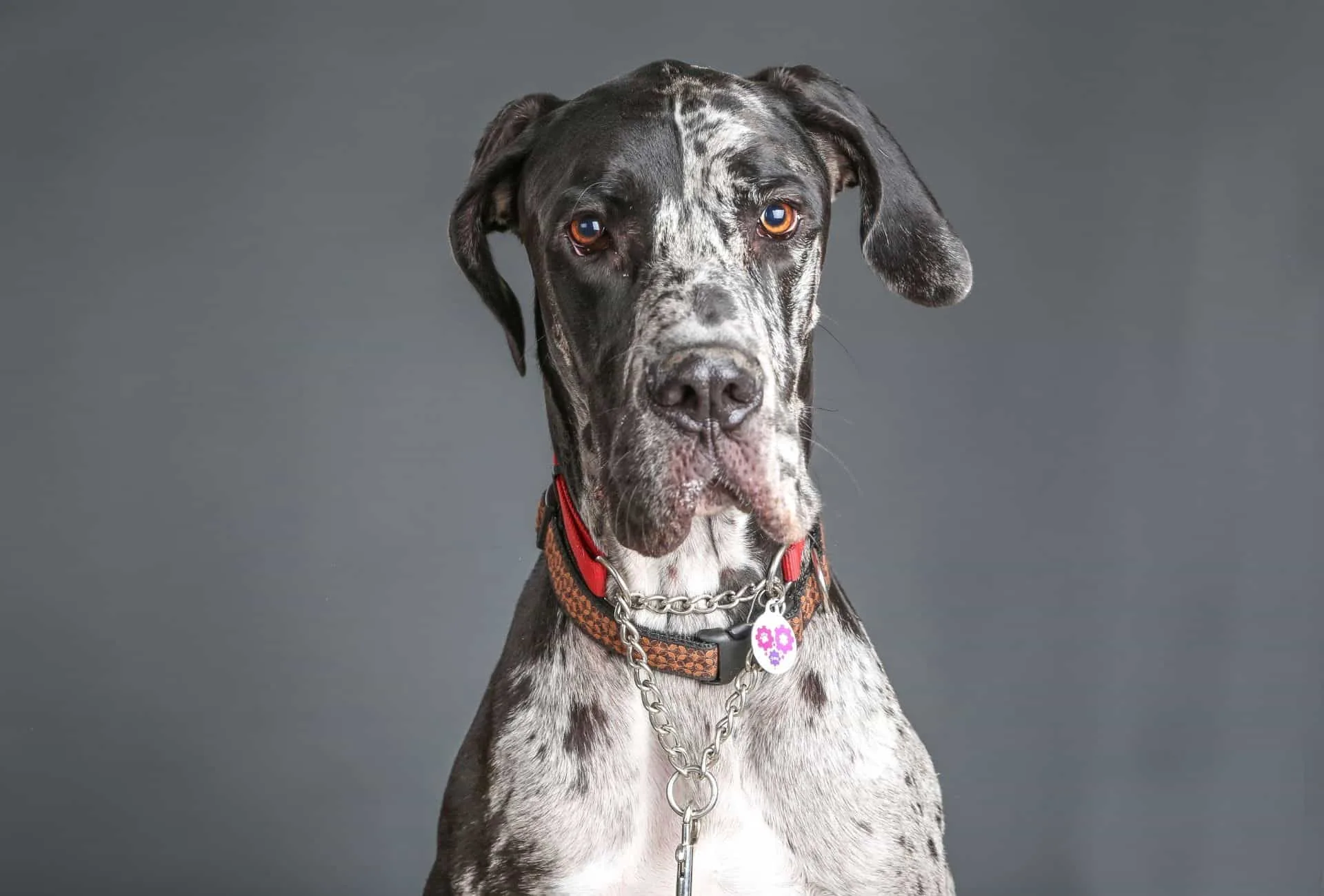
Sadly, the lifespans for Great Danes are shorter than medium-sized breeds and even shorter than some of their large counterparts.
Did you know – The number one cause of death in Great Danes is bloat?
Bullmastiff
The Bullmastiff shares a lot of features with the English Mastiff. Heavy bones, large heads, and similar colors.
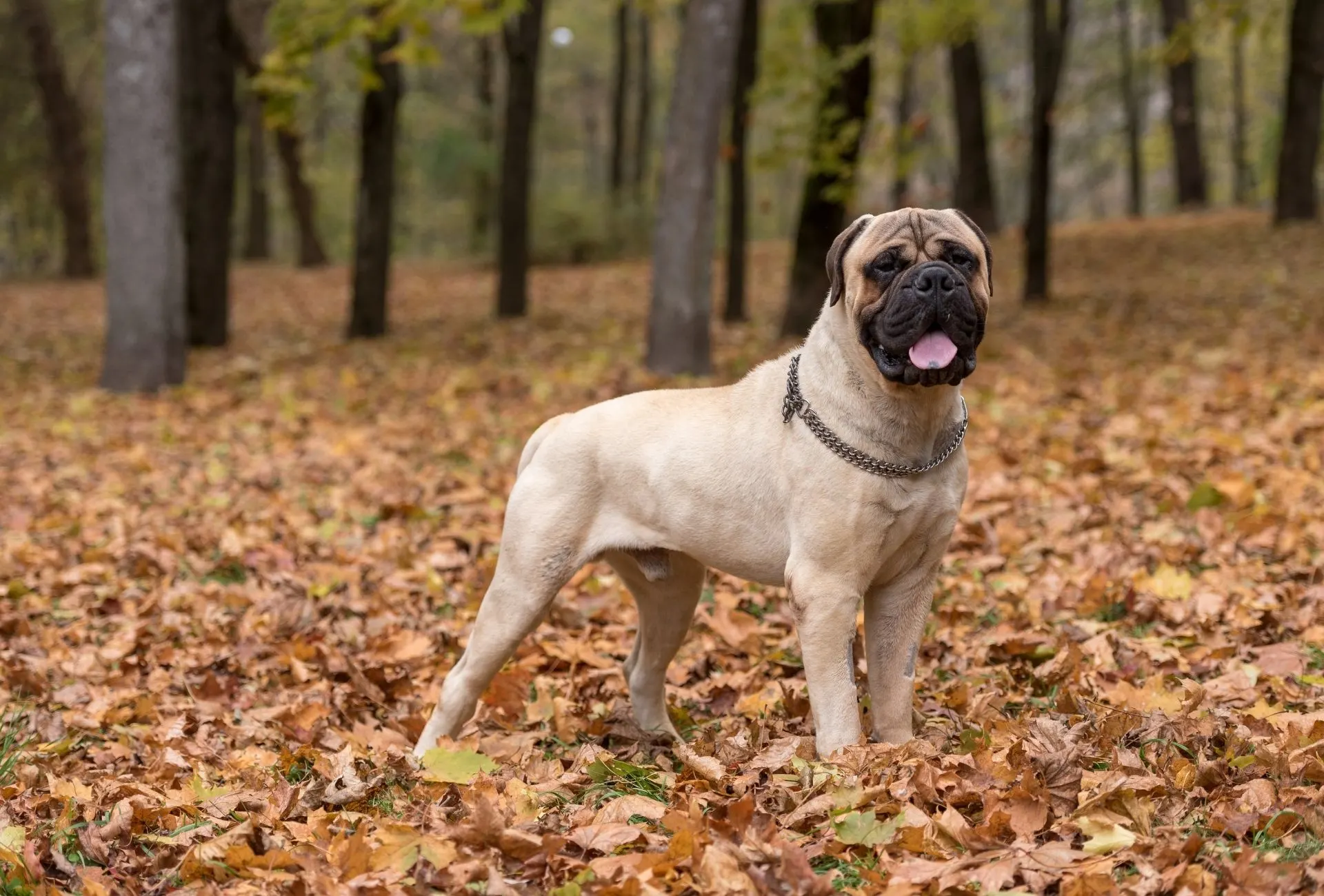
Their difference lies in their more athletic build as well as their original purpose.
Gamekeepers tried to defend their estate against poachers in the 19th century and to achieve that, they’re said to have crossed Mastiffs to Bulldogs at a ratio of 60/40, resulting in this more agile and yet fierce canine.
English Mastiff
Arguably the heaviest among the Mastiffs and the foundation for many other Mastiffs as well as newly created American Bullies.
While chunky individuals may look cute to some, reaching the higher end of the weight scale – which some breed clubs state is up to 90+kg (200+lbs) – is usually not desirable at all.
Hip dysplasia might be the most occurring issue but definitely not the only one contributing to their relatively short lifespan of 5-8 years (yes, they can live longer with proper care and exercise, but many leave us far too early).
If you’re ogling with the idea of getting a Mastiff, be ready for a home makeover with drool as the wallpaper theme.
Cane Corso
Despite their recent addition in 2010, the Cane Corso has gained a lot in popularity in recent years which is not necessarily good news (the key phrase here is the Corso puppy color scam).
The Cane Corso has climbed the popularity ranking of the AKC and clocks in at rank 18 in 2022.
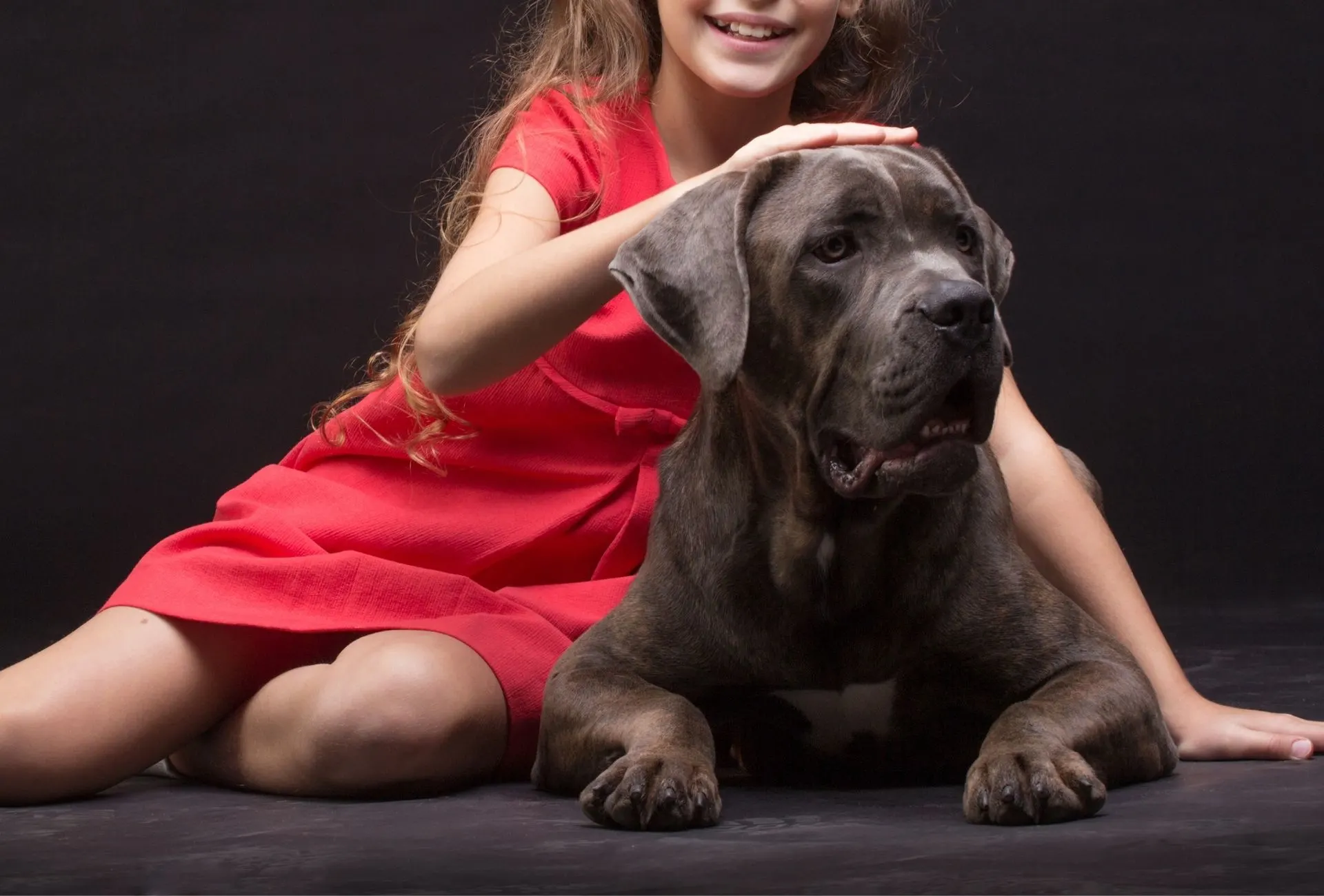
Intense, majestic, and affectionate are appropriate words.
However, these Italian Mastiffs need lots of training and exercise and their mental development shouldn’t be underestimated.
I actually thought about getting one before we finally settled on a Rottweiler.
Neapolitan Mastiff
Some of the most droopy-looking fellas out there, Neapolitan Mastiffs possibly date back as far as 700 BC.
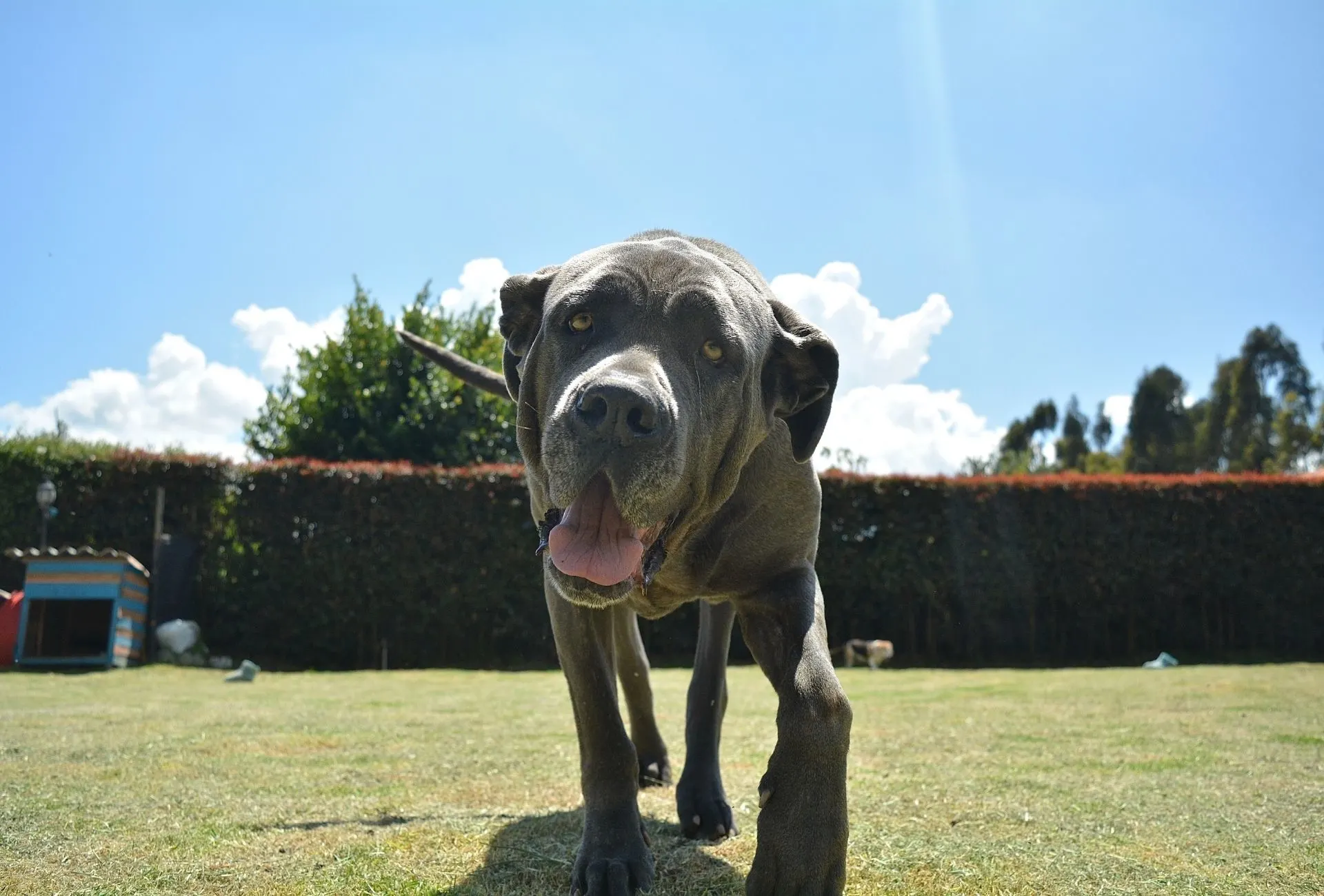
Romans are said to have utilized these massive Mastiffs in the war.
Tosa Inu
This large Mastiff hails from Japan.
Sadly, Japan’s dogfighting culture brought up a hybrid of Shikoku-ken and Western breeds (Bulldogs, Mastiffs, German Pointers, and Great Danes).
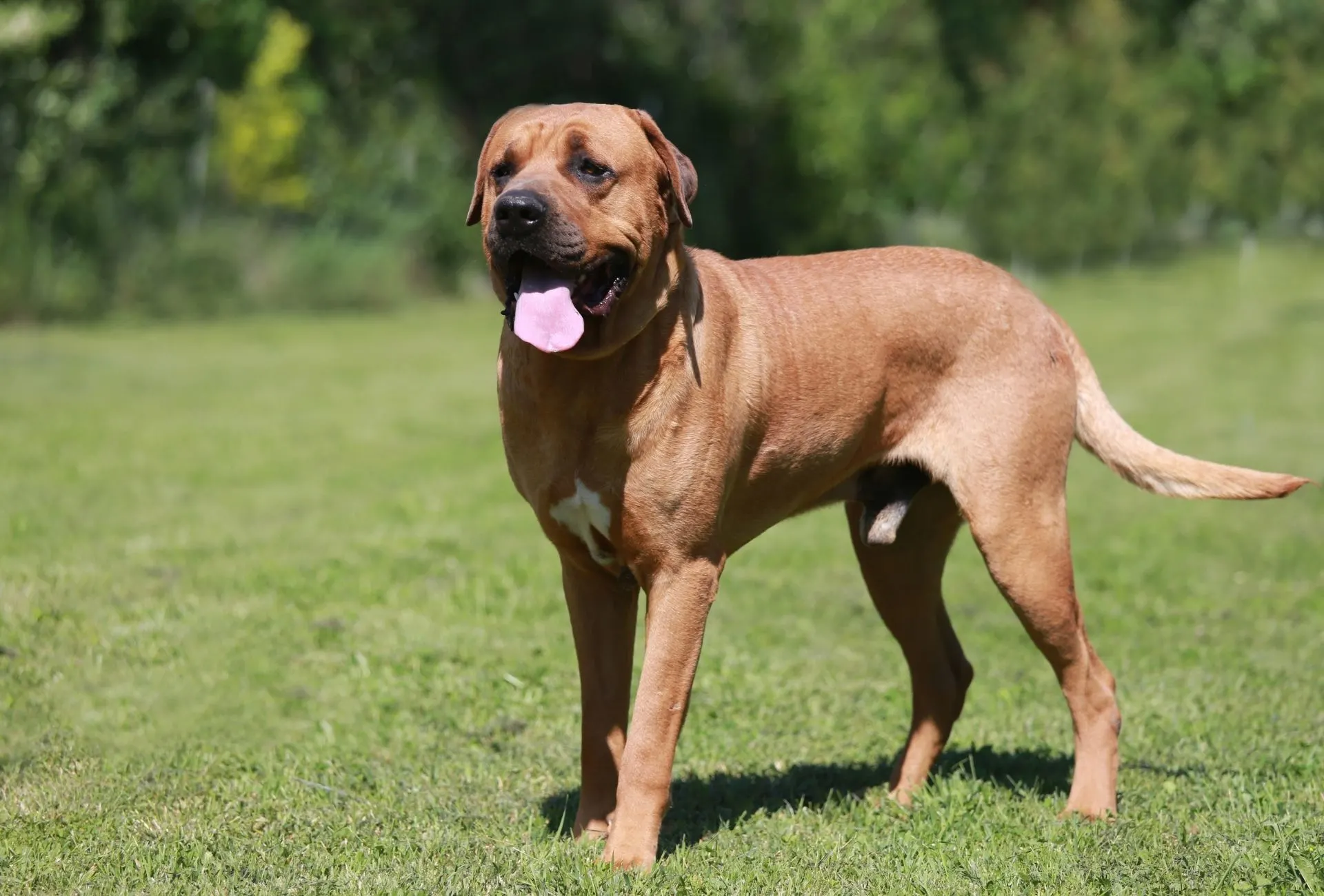
Luckily, this breed is used as a watchdog nowadays around the world but beware, they’re not known to be particularly good with other dogs.
Finding a responsible breeder might not be as easy compared to other breeds.
Cão Fila De São Miguel
This dog was originally used as a herding dog and needs a lot of activity and might not be as even-tempered as other Mastiffs on this list.
Perro Dogo Mallorquín
The Perro Dogo Mallorquín is also called Majorcan Bulldog, Majorcan Mastiff, or Ca de Bou.
On the brink of extinction, after bull-baiting and dogfighting were outlawed on Majorca, breed enthusiasts ensured this breed’s survival.
However, once you leave their Spanish turf, you’ll rarely encounter this Mastiff-like dog breed.
Presa Canario
The Presa Canario is among the moderately-sized Mastiffs.
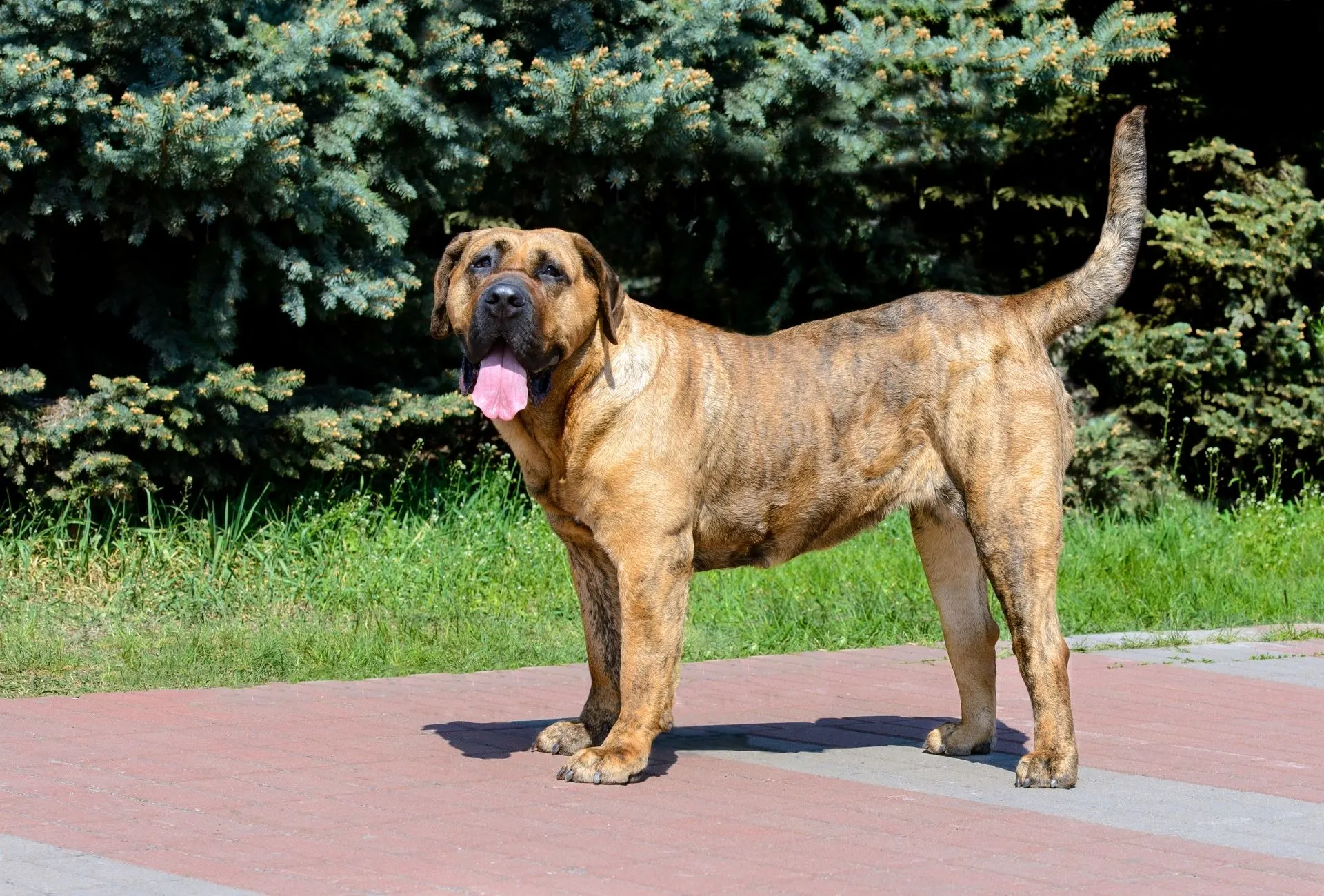
The low, deep bark paired with a balanced temperament and high confidence makes the Presa Canario suitable for guarding.
Similar to the Cane Corso, this breed tends to be very docile with the owners but not so much with strangers (always depends on the breeding line and upbringing though).
Spanish Mastiff
Spanish Mastiffs are technically bred for guarding, but not your house.
They’re livestock guardians and have been around since medieval times.
Aloof, dignified, and intelligent, livestock guardians generally tend to do better when they have a job to do and might not be as affectionate as other Mastiffs on this list.
Pyrenean Mastiff
Similar to the Spanish Mastiff, the Pyrenean Mastiff was used as livestock and isn’t common nowadays.
Some people who don’t mind their independence do still keep them around as pets.
However, they certainly are not suitable for city life due to their nature.
Not to mention their size which can reach an astounding 77 cm (30 in).
Tibetan Mastiff
Tibetan Mastiffs are big fluffy dogs and nobody really knows their origin story.
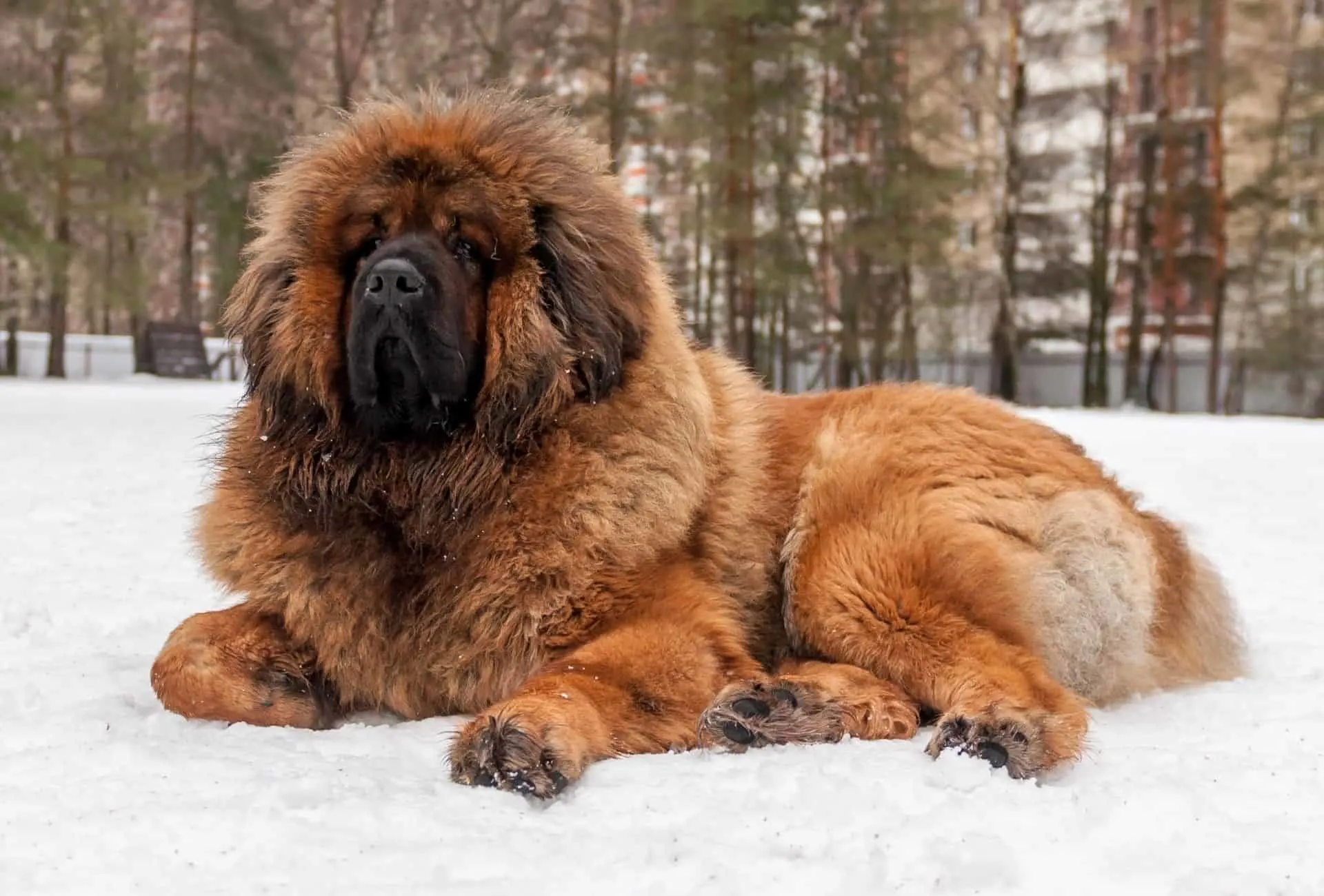
Tibet is quite isolated, the breed dates back to ancient times, and Tibetan Mastiffs are said to have been used in the creation of many European and Middle Eastern Mastiff breeds.
Boerboel
Boer is the Dutch term for German and Dutch “farmers” who settled in South Africa back in the 1600s.
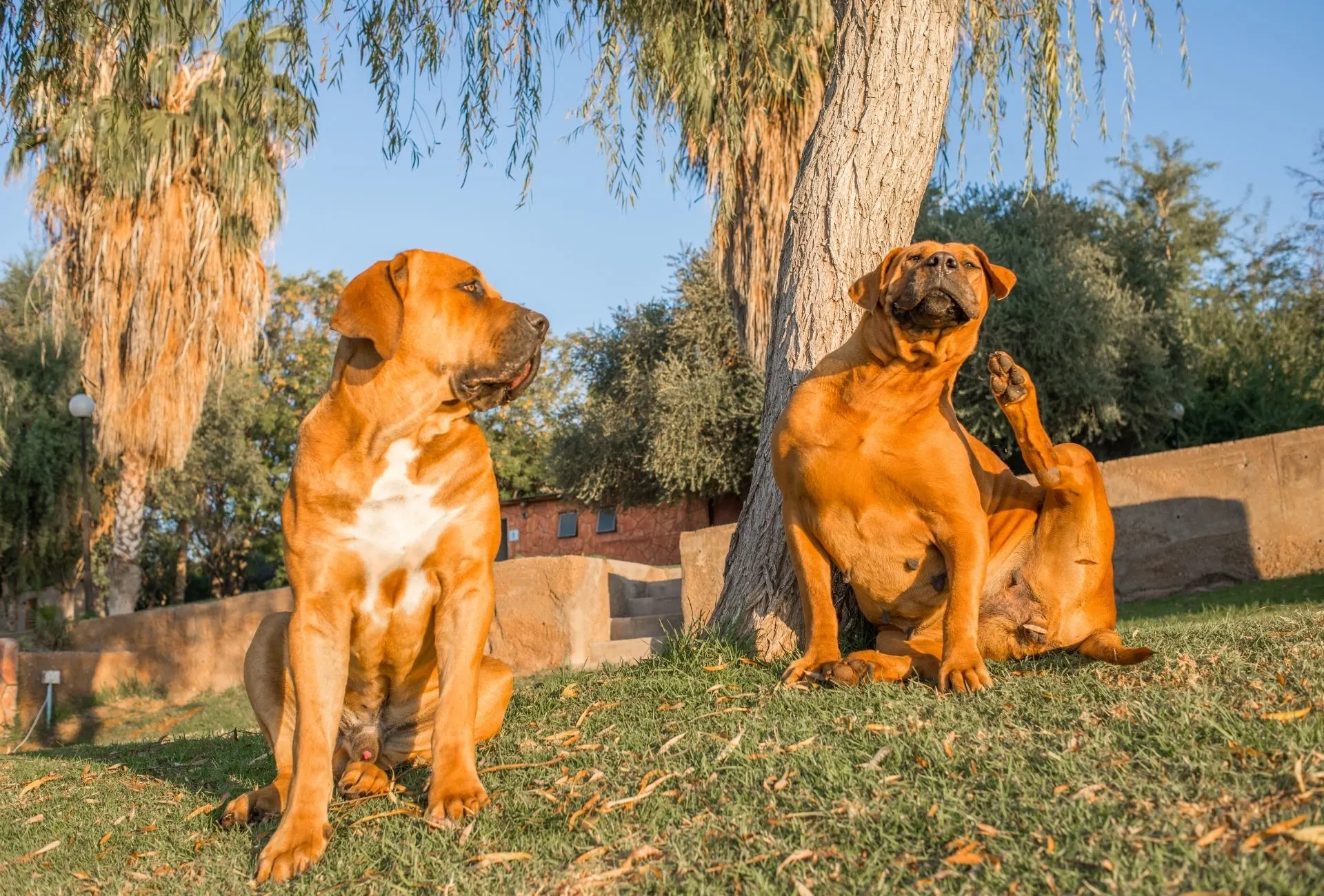
These farmers are said to have brought large guardians with them and the interbreeding resulted in the “farmer’s dog” (Boerboel).
While their sensitive nature made them suitable for personal protection, these behemoths could also fight off wildlife.
Nowadays, they also function as therapy dogs, albeit not as common as other breeds.
Bully Kutta
The Bully Kutta originated in the Punjab region of India and Pakistan.
Rock paintings depicting this Mastiff date back to the 16th century.
Bully Kutta means “heavily wrinkled dog” so that checks out.
Neither the AKC nor the FCI recognizes this breed but the Indian National Kennel Club does.
Abruzzese Mastiff
The Italian Abruzzese Mastiff is distinct from the Maremmano-Abruzzese Sheepdog (also called Maremma Sheepdog, Abruzzese Sheepdog, or Maremmano).
More Mastiff-like in appearance, this related breed is far heavier and even rarer than their sheepdog counterpart.
Dosa Gae
The history of the Dosa Gae is everything but rich. Outside their country of origin, they’re quite unknown.
Some sources say this breed was created by mixing breeds such as the Dogue de Bordeaux, Tosa Inu, English Mastiff, and possibly Neapolitan Mastiff or Bloodhound.
Aksaray Malaklisi
The Aksaray Malaklisi looks like a slightly larger Kangal or Anatolian Shepherd.
Both breeds share a cream-colored coat, black muzzle, and other features.
Despite this, the Aksaray Malaklisi has a pretty distinct appearance.
American Mastiff
With 65-91cm (26-36in) American Mastiffs have a huge variance in size and that goes for males as well as females.
American Mastiffs are quite the recent addition to the Mastiff family with the effort of creating this breed dating back to 1980 and the first formation of purebred breeding stock happening in the 1990s.
Mastiff Breeds Size Comparison
Mastiffs come in all shapes and sizes (okay maybe not in small, but you catch my drift).
Some Mastiffs are as small as 50 cm (20 in) and weigh around 30 kg (65 lbs) while others on the extreme end reach heights of 90 cm (35 in) and weigh up to 90 kg (200 lbs).
Most Mastiff breeds fall somewhere in the range of 60-70cm (24-28in) with a weight of around 45-60kg (100-130lbs).
| Breed | Height | Weight |
|---|---|---|
| Dogo Argentino | 60-68cm (24-27in) | 35-45kg (75-100lbs) |
| Fila Brasileiro | 60-75cm (24-30in) | 40-50kg (90-110lbs) |
| Broholmer | 70-75cm (28-30in) | 40-80kg (90-175lbs) |
| Dogue de Bordeaux | 57-67cm (22-26in) | 55-65kg (120-140lbs) |
| Great Dane | 71-86cm (28-34in) | 45-70kg (100-155lbs) |
| Bullmastiff | 61-68cm (24-27in) | 45-60kg (100-130lbs) |
| English Mastiff | 70-90cm (28-35in) | 55-80kg (120-175lbs) |
| Cane Corso | 58-70cm (23-28in) | 40-60kg (90-130lbs) |
| Neapolitan Mastiff | 60-77cm (24-30in) | 50-70kg (110-155lbs) |
| Tosa Inu | 57-80cm (22-31in) | 45-80kg (100-175lbs) |
| Cão Fila De São Miguel | 48-61cm (19-24in) | 25-40kg (55-90lbs) |
| Perro Dogo Mallorquín | 52-58cm (20-23in) | 30-38kg (65-85lbs) |
| Presa Canario | 56-65cm (22-26in) | 38-60kg (85-130lbs) |
| Spanish Mastiff | 72-88cm (28-35in) | 52-90kg (115-200lbs) |
| Pyrenean Mastiff | 71-77cm (28-30in) | 55-110kg (120-240lbs) |
| Tibetan Mastiff | 61-76cm (24-30in) | 35-70kg (75-155lbs) |
| Boerboel | 59-70cm (23-28in) | 55-80kg (120-175lbs) |
| Bully Kutta | 76-86cm (30-34in) | 70-80kg (155-175lbs) |
| Abruzzese Mastiff | 60-73cm (24-29in) | 30-45kg (65-100lbs) |
| Dosa Gae | 60-76cm (24-30in) | 65-85kg (140-185lbs) |
| Aksaray Malaklisi | 70-81cm (28-31in) | 60-85kg (130-185lbs) |
| American Mastiff | 65-91cm (26-36in) | 60-90kg (130-200lbs) |
Largest Mastiff Breeds
The largest Mastiff breed is the English Mastiff with up to 90cm (35in) in height but other incredibly large Mastiff breeds include the Great Dane, Tosa Inu, and rare breeds like the Spanish Mastiff, Bully Kutta, and American Mastiff.
Just introducing one of these pups into your home will not ensure that he or she will be big though.
Individuals always differ and some breeds have a huge span between individuals, not to mention the fact that females are generally smaller.
Keep in mind that large dogs often have issues with hip/elbow dysplasia and generally shorter lifespans.
Bigger is not always better, on the contrary.
Top Mastiff Breeds (by Popularity)
Top Mastiff breeds by AKC registration popularity from last year include the Cane Corso, Great Dane, English Mastiff, Bullmastiff, Dogue de Bordeaux, Dogo Argentino, Neapolitan Mastiff, and Tibetan Mastiff.
| Breed | Popularity Rank AKC 2022 (2020) |
| Cane Corso | 18 (25) |
| Great Dane | 19 (15) |
| English Mastiff | 37 (33) |
| Bullmastiff | 61 (55) |
| Dogue de Bordeaux | 78 (71) |
| Dogo Argentino | 88 (93) |
| Neapolitan Mastiff | 119 (100) |
| Tibetan Mastiff | 137 (140) |
If you’d include the Rottweiler and Boxer which the FCI technically recognizes as Mastiffs, they’d be at places 7 and 16 respectively so they’d definitely bump up that overall Mastiff popularity.
However, why is it that especially very large Mastiffs don’t seem to be all that desirable with only three of them being in the top 50?
Well, for one thing, giant dogs require lots of time, care, and knowledge. Last but not least, is financial ability.
Huge dogs need bigger beds, vet bills are more expensive, food can be ten times the cost of a small, and so on.
Plus it’s restricting your lifestyle a lot more because you may be refused by doggy daycare, dog walkers, or even dog trainers and puppy class instructors.
Whatever you decide to do, Mastiffs are incredible dogs, occupying a large part of your responsibilities.
They can be a money sink, especially if they’re not health-tested and need a healthy diet paired with appropriate exercise.
Disclaimer: This blog post does not substitute veterinary attention and does not intend to do so. I am not a veterinarian or pet nutritionist. If your dog shows any sign of illness, call your vet.
Sarah
Monday 8th of November 2021
Im was surprised St. Bernards weren't/didn't make it on the list... Are they not in this category and if not where do they fall?
Danielle
Tuesday 9th of November 2021
Hey Sarah, the St. Bernard definitely is a "Molossian type" dog but they fall under the FCI section of 2.2: "Mountain type" not 2.1 "Mastiff type" as the others in this list do. You'll find other similar large breeds like the Landseer, Leonberger, and Newfoundland.
Hope that clarifies it :) Danielle
Lois Sam
Monday 1st of November 2021
I've always had dogs all my life but I love the English Mastiff the best right now I have two of them they're very sweet and they're exceptionally smart they're natural Born guard dogs I watch what they eat because I want their life span to be longer I would only recommend them to a responsible dog owner who would take them to the vet not neglect them and love them and you will get the love back